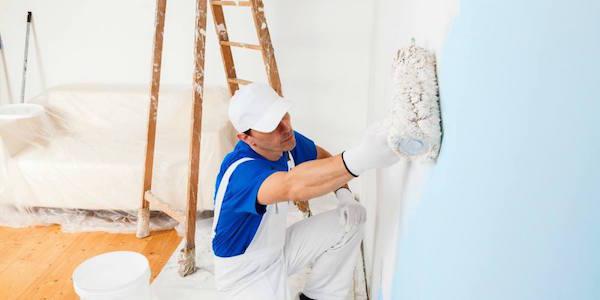Are There High Levels Of VOCs In Your Paint?
The smell can be overwhelming when you coat the walls of your living room or kitchen with new paint. You may feel faint or get a pounding headache when you stand in the area for too long, only getting relief when you go outside for fresh air. This is a common physical reaction that people have to paints and related products with lots of VOCs inside of them.
What are VOCs?
The acronym stands for volatile organic compounds, which are substances that are proven to have negative health effects. These compounds have high vapour pressures and can rapidly evaporate into the atmosphere, where they can be inhaled by human beings and absorbed by the general environment.
The emissions can be extremely potent when the area is small or when it does not have proper ventilation. Someone using paints with high levels of volatile organic compounds while forgetting to open up any windows and doors in the building risks a number of serious health problems — these include respiratory irritation, nausea, headaches and damage to vital organs like the kidneys and the liver.

How can paints lower their levels of VOCs?
Businesses can buy chemicals in Canada from the seasoned company CCC Chemicals for their products to have lower levels of volatile organic compounds. Popular options include dimethyl carbonate, methyl acetate, tertiary butyl acetate, P-Chlorobenzotrifluoride and acetone. They have a portfolio full of solutions that they have carefully sourced from solvent suppliers across the globe.
If businesses want details about these specific ingredients, they can browse the remarkable portfolio online or they can contact the industry leading chemical company to talk to trained specialists about what options will be best for them. Reducing the levels of volatile organic compounds will appeal to consumers who are conscious of their health and the well-being of the environment. Other positive aspects of low VOC paints are that they don’t create strong odors after the initial application, they provide consistent coverage and they can dry quickly on surfaces.
What else should be avoided in paints?
Companies can avoid having high levels of VOCs in their formulas, but that doesn’t mean that they are completely devoid of potentially harmful materials. It’s still possible that the formulas will contain HAPS, otherwise known as hazardous air pollutants — these are toxic emissions that are linked to severe problems related to human health like birth defects and cancer. One popular example used as a solvent and as a paint stripper is methylene chloride, which is suspected to be a carcinogen and immediately affects respiration and the central nervous system after exposure.
The chemical supplier CCC Chemicals has two solvents that are officially free of hazardous air pollutants:
- Methyl Ethyl Ketone (aka. MEK or Butanone)
- Butyl Acetate (aka. Butyl ethanoate)
Cracking open windows or avoiding freshly-painted rooms for twenty-four hours are not foolproof safeguards from volatile organic compounds and hazardous air pollutants. Consumers don’t have to worry about the long-term influence of these substances when they buy options with low or no levels of these chemicals inside.









